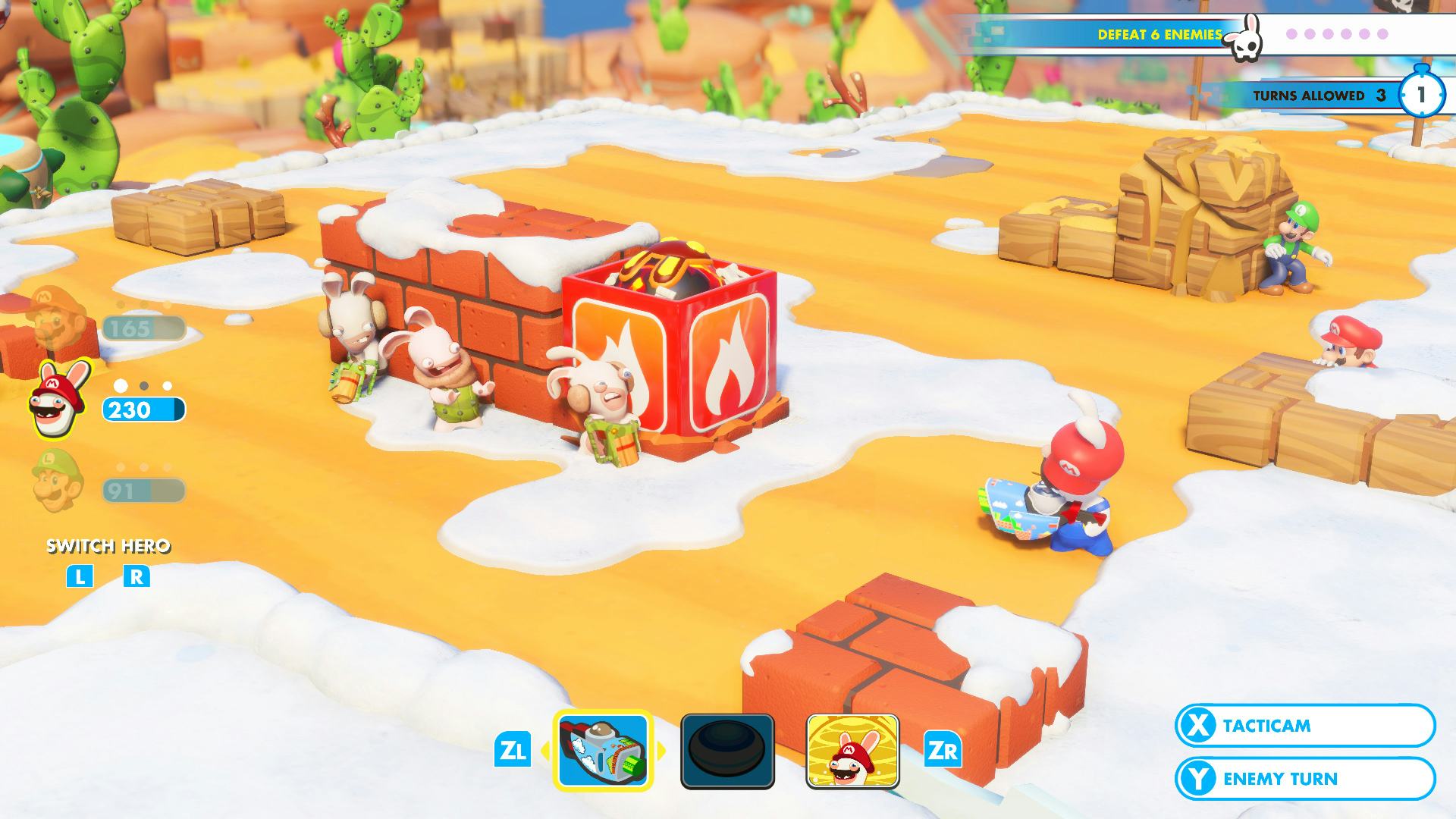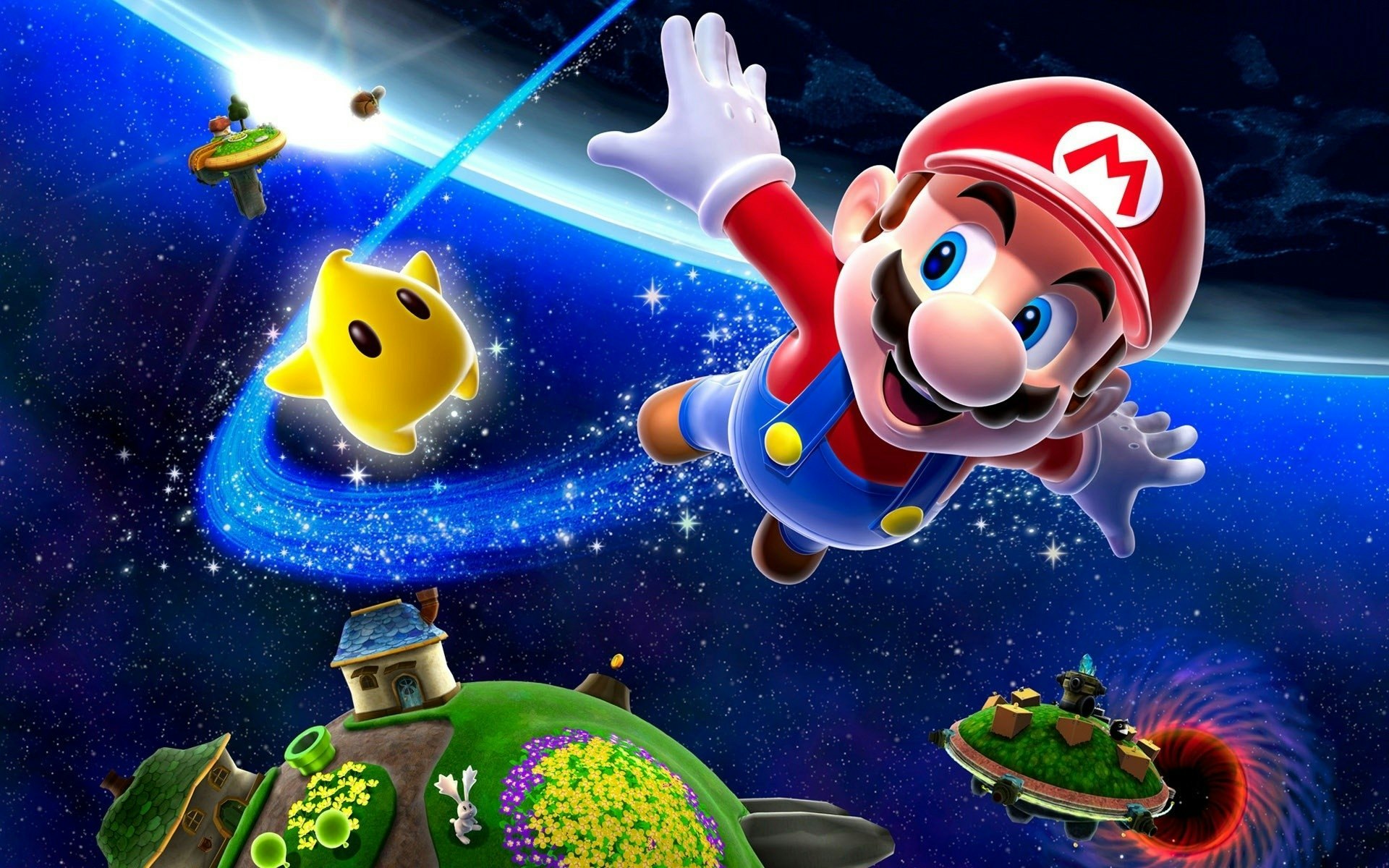
Ubisoft is shooting for the stars with Mario + Rabbids Sparks of Hope.
In creating a sequel to the 2017 surprise hit, Mario + Rabbids Kingdom Battle, the developers wanted to push the boundaries further than they dared in the first game.
Sparks of Hope is a space-faring adventure that sees Mario and his Rabbid allies attempt to stop the mysterious cosmic villain Cursa from wreaking havoc on a system of planets. This premise prompted the team to take inspiration from one of Mario’s most beloved adventures.
“The first discussions were ‘Okay, we are going to space, so let’s bring in a lot of things in from Mario Galaxy,’” Lead Producer Xavier Manzanares tells Inverse. But looking at the final product, it's clear Sparks of Hope doesn't exactly wear that influence on its sleeve.
So, what happened?

Sky’s the limit
The space-faring adventure demanded the team play with the world of Mario Galaxy. They went to Nintendo with a long list of characters and enemies to use and most of them were approved. “We had a lot of things in the environment from Mario Galaxy games,” Manzanares recalls of an early Sparks of Hope build.
Since Ubisoft first started development on the Mario + Rabbids franchise in 2014, Nintendo has been very open to the team’s wild ideas, entrusting the company’s mascot with Ubisoft’s developers. Yet even with the trust that Nintendo had in the project, there was pressure on the team to deliver something that was somewhat coherent.

“The major blocker for us at the very beginning was trying to make a pitch that even if it was absurd, it would still make sense for Ubisoft and Nintendo,” says Creative Director Davide Soliani. In the development of Kingdom Battle, this sometimes led the team to not push as much as they could have.
Sparks of Hope adds iconic Mario enemies such as Goombas, Bob-ombs, and Wigglers to Ubisoft’s strategy RPG. This was something Soliani says they probably could have had in Kingdom Battle, but the team was too afraid to ask.
“Nintendo is always saying to me, ‘Ask for what you want,’” he says. “‘Worst-case scenario, we are going to say no, but if you aren’t asking then you won’t have any of it.’”
This time around, Soliani and the rest of the Ubisoft team were not afraid to ask for what they wanted.
Question and answer
Still, presuming to ask for creative freedom with the most iconic video game character of all time was a daunting prospect to the Rabbids team. When Ubisoft approached Nintendo with ideas, the publisher would always ask the same question: Why?

“What is your vision? Why are you doing this? What are you adding?” Manzanares lists the questions from memory. “We had to organize our thoughts and explain to Nintendo what we wanted to do.”
This questioning forced the developers to go back to the drawing board and think deeply about what they were trying to accomplish by adding so much. When it came to the Mario Galaxy elements, the answer to Nintendo’s many questions was that the team thought it was cool.
“In the end, we had to remove them,” says Manzanares. “It is cool and fun. But that's not enough. It needs to make more sense in our game, in our own universe.”
Two major elements of Sparks of Hope still bear a connection to that initial inspiration. Rabbid Rosalina is a new playable hero, a moody child with an affinity to storybooks and the titular Sparks. The Sparks themselves are Mario + Rabbids fusion of Super Mario Galaxy’s Lumas and a Rabbid, according to the team.
Sparks are central to the story of the second Mario + Rabbids game, linking the main cast of heroes. In combat, they add elemental advantages and special abilities. Ubisoft wears its inspirations proudly with the Sparks, while giving them a purpose in this universe.
Something new
With the nostalgia and cameo-filled environment stripped back, the team was left with the initial goal of creating a space-faring adventure in the Mario + Rabbids series. What did that mean? Kingdom Battle was a linear experience, so in order to evoke the sense of exploration that outer space requires, the sequel needed to have open environments with distinct identities.
Creating a spectrum of unique planets that enticed the player to explore began with the art team. Each planet had a set of keywords such as spring, curiosity, or bliss, that described what the team was attempting to communicate.

The game’s planets are also associated with seasons and specific weather. The art team would also give each planet a unique art style that helped define its feel. Renaissance oil paintings, graffiti, comic books, and ancient Greek pottery were all studied by the art team and put into one planet or another.
These same keywords helped Sparks of Hope’s three composers (Grant Kirkhope, Gareth Coker, and Yoko Shimomura) orchestrate their tracks. The collective work of these composers includes all-time great soundtracks from the likes of Kingdom Hearts, GoldenEye 007, and Halo Infinite.
Another source of inspiration was, again, Super Mario Galaxy:
“We listened a lot to Mahito Yokota’s soundtrack, and he’s actually the song supervisor for the game,” says Sound Director Romain Brillaud. Here too, the classic 3D platformer was a jumping-off point that led to something entirely new. Three composers could sound like too many cooks in the kitchen, but each brings forth different emotions in their tracks, be it nostalgia, fear, or joy. Each sounds distinct, but has an instrumental cohesion that allows the music to feel both expansive yet distinct to each planet.
Throughout development, this process of pulling numerous seemingly non-connected ideas together into a solid package is the benefit of what Soliani describes as “controlled randomness.”
“It seems like chaos, but it’s organized chaos,” adds Manzanares. “We have to find the balance at the end. That’s why it took us four years.”
Mario + Rabbids Sparks of Hope will be released on Nintendo Switch on October 20, 2022.







